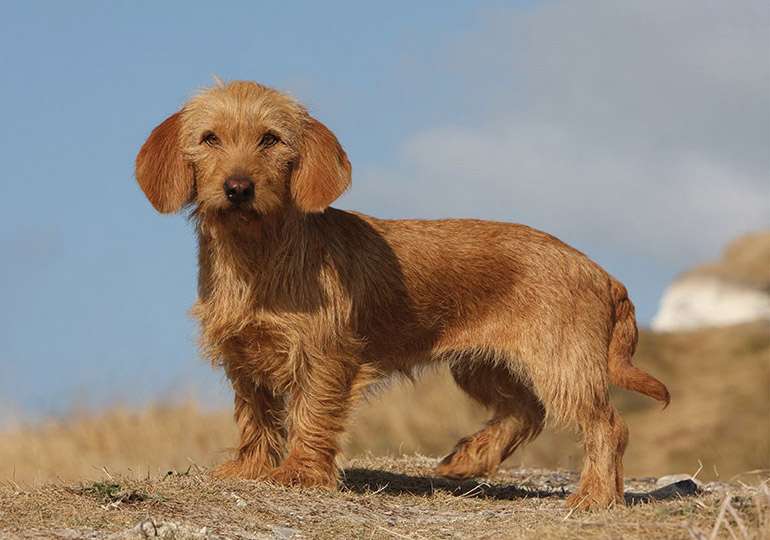
Southern China is the origin of the Shar Pei dog breed. The Shar Pei was brought dangerously close to extinction in the 20th century due to its traditional use as a chicken-eating dog and property watchdog. While a conventional, less wrinkled variant of the breed is being maintained in Hong Kong, the breed is best known for its deep wrinkles in the West.
Morphological Characteristics
The medium-sized Shar Pei dog breed is known for having extremely wrinkled skin and has a short coat. They are described as having clamshell ears, a butterfly nose, a melon-shaped head, a grandmotherly face, a water buffalo neck, horse buttocks, and dragon legs in the Chinese breed standard. The eyes are set very deeply into the folds of skin on the skull, while the ears are small, trapezoidal, and widely spread apart. The breed’s large, well-padded nose has a bulge at its base and is frequently darker than the rest of its coat. The breed has broad, medium-length tail that is curved over its back like a spitz-type dog, sloping shoulders, straight, well-boned, strong legs, and strong legs.
Care as a Pet/ In Captivity

Grooming
The Shar-Pei is a naturally odor-free dog who requires very little maintenance to maintain his attractive looks. Dead hair and grime can be removed with a vigorous once-weekly brushing with a rubber curry or grooming mitt.
The grooming process for shar-peis is straightforward. Their coats don’t require a lot of upkeep; often, just a weekly brushing to remove dead hair is needed. They do shed, but not in large amounts.
If they do require a bath, the most important thing is to make sure you thoroughly dry them in between the folds if they are especially wrinkled. The possibility of skin infections exists. Additionally, they might require mouthwash following a meal.
Exercise
The shar-pei breed is not well known for having a lot of energy. It would be uncommon to observe them participating in agility. They are frequently recognized as dogs suitable for apartment living as long as they get regular, enjoyable walks that last around an hour each day and are kept suitably enriched in the home.
Training
A shar-pei has to start out with the right socialization and training. They can have a high hunting drive and are frequently suspicious of other dogs and strangers. They thrive better when they are the lone pet in the home for these reasons.
They dislike roughhousing, thus it’s crucial to use positive reinforcement techniques when training them. The majority of the time, forcing a shar-pei to cooperate will not go well.
Diet and Nutrition
Like any other dog, it’s crucial to provide them with a high-quality, precisely portioned diet and to ensure that they always have access to a fresh water source. If giving a wet or raw diet, more care should be taken to ensure that any residue is washed away from the mouth area after eating because the shar-pei is more susceptible to bacterial skin diseases.
If they like to guzzle their food quickly, it could be recommended feeding them from a slow feeding bowl because they are also known to be prone to stomach torsion.

Table





